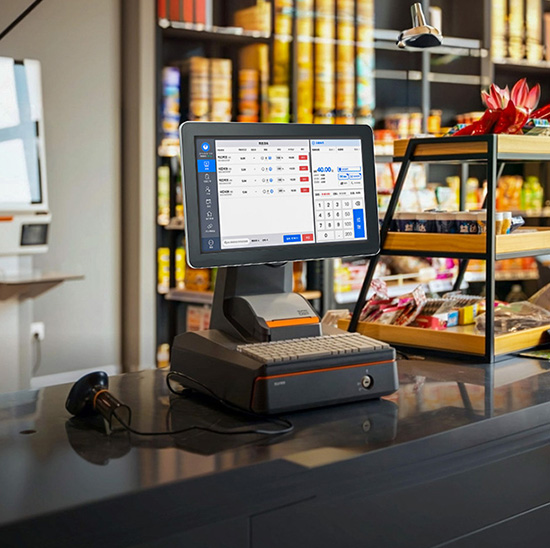Automotive production demands precision, speed, and consistency to meet global quality standards and consumer expectations—and Industrial Touchscreen Panels have become the backbone of modern manufacturing workflows. Unlike outdated button-based controls or fragmented monitoring systems that slow down production and increase error risks, these specialized touchscreen panels centralize process management, enable instant parameter adjustments, and streamline data tracking. Whether integrated into robotic assembly lines, component manufacturing stations, or end-of-line inspection systems, Industrial Touchscreen Panels empower technicians, supervisors, and plant managers to maintain tight control over every production step—from stamping and welding to final assembly and quality validation. This article explores their core features, key applications, and transformative benefits, helping automotive manufacturing leaders select touchscreen solutions that elevate productivity, reduce defects, and scale with evolving production needs.

Core Features of Industrial Touchscreen Panels for Automotive Production
1. Ruggedized Design for Automotive Manufacturing Environments
Automotive plants pose harsh conditions—vibration, dust, temperature fluctuations, and physical impact—and these touchscreen panels are built to endure:
Industrial-grade durability: 3mm+ thick tempered glass with scratch-resistant and impact-resistant coatings withstands accidental tool drops, component collisions, and debris common on production lines.
Environmental resilience: IP65-rated sealed enclosures block dust, coolant, and minor fluid spills from entering internal components, ensuring reliability in welding, painting, and assembly zones.
Wide operating temperature range: Functions seamlessly from -10°C to 60°C (14°F to 140°F), adapting to hot stamping areas, cold storage facilities, and ambient factory floors.
2. Precise, Low-Latency Touch Performance
Automotive production requires fast, accurate control—and Industrial Touchscreen Panels deliver responsive operation:
Ultra-low latency (≤2ms) touch response: Ensures immediate execution of commands (e.g., adjusting robotic arm positioning, triggering welding cycles) without lag, critical for maintaining production rhythm.
Gloved-hand compatibility: Enhanced capacitive or infrared touch technology works with work gloves (e.g., nitrile, leather) used in assembly and maintenance, eliminating the need to remove PPE mid-task.
Multi-touch support: Enables simultaneous gestures (e.g., zooming into component schematics, scrolling through production logs) to streamline complex operations.
3. High-Visibility Displays for Clear Process Monitoring
Clear data visualization is essential for production oversight—and these panels prioritize readability:
High-brightness (500+ nits) screens: Cut through glare from factory lighting, welding arcs, and reflective surfaces, ensuring production metrics (e.g., cycle times, torque values, defect counts) are visible at a glance.
High-resolution (1080p+) panels: Render detailed CAD models, assembly guides, and real-time sensor data with crisp clarity, supporting precise adjustments and quality checks.
Color-coded interfaces: Bold color coding (e.g., green for “in spec,” red for “critical alert”) helps staff quickly identify process status and address issues promptly.
4. Seamless Integration with Automotive Production Systems
Interoperability with existing tools is critical—and Industrial Touchscreen Panels offer full connectivity:
Industrial protocol support: Compatible with PROFINET, Ethernet/IP, Modbus TCP, and CANopen to sync with robotic controllers (e.g., Fanuc, ABB, KUKA), PLCs, and manufacturing execution systems (MES).
MES/ERP integration: Automatically logs production data (e.g., component counts, cycle times, defect records) into MES platforms (e.g., Siemens Opcenter, SAP) and ERP systems, eliminating manual data entry.
Peripheral compatibility: Connects with barcode scanners, torque wrenches, vision inspection systems, and label printers to create end-to-end automated workflows.
5. Customizable, Production-Centric Interfaces
Every automotive production line has unique needs—and these panels adapt to specific workflows:
Role-based dashboards: Technicians access task-specific controls (e.g., “welding parameter adjustment”), while supervisors view line-wide performance metrics and defect trends.
Model-specific configurations: Pre-loaded templates for different vehicle types (e.g., sedans, SUVs, electric vehicles) reduce setup time when switching production runs.
One-touch shortcuts: Customizable quick-access buttons for high-frequency tasks (e.g., “start batch,” “pause line,” “log defect”) cut operation time by 30–40%.
Key Applications of Industrial Touchscreen Panels in Automotive Production
1. Robotic Assembly Lines (Welding, Stamping, Fitting)
In automated production cells, these touchscreen panels serve as central control hubs:
Robot programming & parameter adjustment: Technicians set welding current, stamping pressure, and component fitting tolerances via the touchscreen, with pre-loaded profiles for different vehicle models.
Real-time process monitoring: Displays robotic position, cycle times, and error codes, triggering alerts for deviations (e.g., misaligned parts, equipment malfunctions) to prevent defective outputs.
Quality validation: Requires touch confirmation of critical assembly steps (e.g., “verify chassis weld integrity”) before the robot proceeds to the next phase.
2. Component Manufacturing Stations (Engines, Transmissions, Electronics)
At component production facilities, Industrial Touchscreen Panels ensure precision and consistency:
Process parameter control: Monitors and adjusts variables like machining speed, torque, and material feed rates for engine blocks, transmission gears, and electronic components.
Batch tracking: Scans component barcodes to link production data (e.g., batch numbers, supplier info) to individual parts, enabling full traceability for recalls or quality audits.
Inventory management: Automatically updates stock levels of raw materials and finished components, alerting staff to low supplies or overstock.
3. Final Assembly & Trim Lines
In end-stage assembly, these panels streamline complex, multi-step workflows:
Assembly guide access: Technicians pull up digital step-by-step guides (with images and videos) for interior trim installation, electrical wiring, and fluid filling—eliminating bulky paper manuals.
Parts verification: Scans component barcodes to confirm compatibility with the vehicle VIN, preventing incorrect part installation (e.g., mismatched trim pieces, wrong wiring harnesses).
Line balancing: Displays real-time workload data for each station, helping supervisors redistribute tasks to avoid bottlenecks and maintain production targets.
4. Quality Inspection & End-of-Line Testing
Before vehicles leave the plant, these touchscreen panels optimize quality validation:
Inspection checklists: Digital checklists for functions like paint defect scanning, brake testing, and electrical system verification—with touch-signoff for each step to ensure no gaps.
Defect logging & analysis: Technicians categorize defects (e.g., scratch, misalignment, electrical fault) via the touchscreen and attach photos/videos, enabling root-cause analysis.
Compliance reporting: Auto-generates quality certificates and test reports to meet IATF 16949, ISO 9001, and regional safety regulations (e.g., FMVSS, EU WVTA).
Benefits of Industrial Touchscreen Panels for Automotive Production
1. Increased Production Efficiency & Throughput
By streamlining workflows and reducing downtime, these panels boost operational performance:
Faster setup and changeover times (30–40% reduction) with pre-loaded model templates and one-touch controls.
Minimized line stoppages via real-time alerts, ensuring production runs stay on schedule even when issues arise.
2. Reduced Defect Rates & Rework Costs
Precision control and quality oversight cut waste and improve output quality:
Early defect detection reduces rework costs by 25–35% and prevents defective components from moving to downstream processes.
Standardized workflows and digital checklists ensure consistency across shifts, reducing human error by 50–60%.
3. Enhanced Data Visibility & Decision-Making
Centralized data tracking empowers data-driven process improvements:
Real-time dashboards provide visibility into key metrics (e.g., cycle times, defect rates, equipment utilization) to identify bottlenecks and optimize workflows.
Historical data analysis helps plant managers forecast production needs, plan maintenance, and reduce long-term costs.
4. Simplified Compliance & Traceability
Automotive manufacturers face strict regulatory requirements—and these panels simplify adherence:
Comprehensive digital audit trails log every production step, parameter adjustment, and quality check, making audits 50% faster and less resource-intensive.
Full component traceability (linked to VINs) enables targeted recalls and simplifies compliance with safety regulations.
FAQs About Industrial Touchscreen Panels for Automotive Production
Q1: Are these touchscreen panels compatible with our existing robotic systems and MES software?
A1: Yes—they support all major industrial protocols and integrate seamlessly with leading robotic brands (Fanuc, ABB, KUKA) and MES/ERP platforms (Siemens Opcenter, SAP, Oracle). Our team verifies compatibility with your specific setup.
Q2: Can the panels withstand the harsh conditions of welding or stamping areas?
A2: Absolutely. They feature IP65-rated enclosures, heat-resistant components, and high-brightness screens that cut through welding glare—ensuring reliability in even the toughest production zones.
Q3: How easy is it to customize the interface for different vehicle models or production tasks?
A3: Customization is straightforward. We pre-configure model-specific dashboards, checklists, and shortcuts to match your workflows. You can also adjust interfaces in-house via user-friendly software tools.
Q4: What is the typical lifespan of these panels in a 24/7 automotive production environment?
A4: With industrial-grade components, they last 7–10 years in continuous operation. Most models include a 3–5 year warranty covering defects and performance issues in manufacturing settings.
Q5: Do the panels support remote monitoring or troubleshooting?
A5: Yes—many models offer remote access capabilities. You can monitor production data, adjust settings, or troubleshoot issues from a central control room or even off-site, reducing downtime and maintenance costs.
Conclusion
Industrial Touchscreen Panels are transformative tools for automotive production, merging rugged durability, precise control, and seamless data integration to overcome the industry’s unique challenges. By boosting efficiency, reducing defects, and simplifying compliance, these panels help manufacturers meet growing demand while maintaining the highest quality standards—whether producing traditional gasoline vehicles, electric vehicles, or commercial trucks. For plant managers and manufacturing leaders looking to stay competitive in a fast-paced industry, investing in Industrial Touchscreen Panels is a strategic decision that delivers immediate and long-term value.
Ready to optimize your automotive production line with high-performance Industrial Touchscreen Panels? Fill out the form on our website to connect with our automotive technology experts. We’ll assess your specific production workflows, demonstrate integration with your existing systems, and provide a customized solution proposal—helping you elevate efficiency, quality, and profitability in your manufacturing operations.

